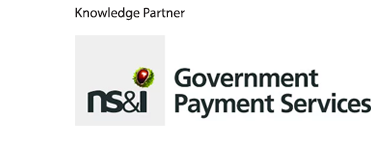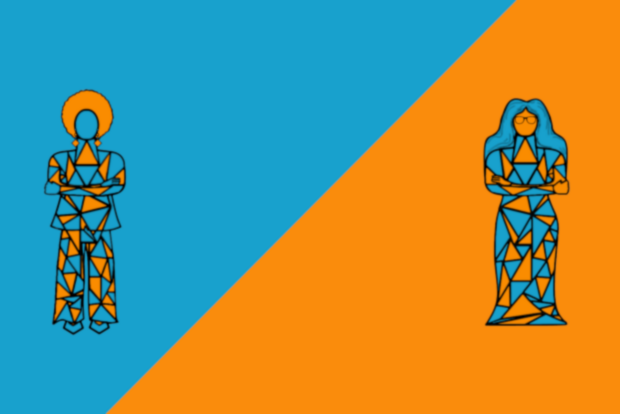Building diverse public service workforces that reflect the communities they serve

Organisations with diverse leaderships are better able to meet citizens’ needs and expectations – but how can civil service bodies broaden the range of people who make it to the top? At the Global Government Summit, national leaders shared their experiences.
“A year ago, Cyclone Gabriel caused real devastation across some of the more remote areas of the North Island of New Zealand, and extensive flooding,” recalled Hannah Cameron, deputy commissioner in the country’s Public Service Commission. In some areas, “the roads were gone. There was no power; no mobile network. Some communities were entirely cut off.”
Taking the initiative, local Māori leaders “managed to access a helicopter and get themselves to Auckland. They got some emergency radios, and went around dropping them off to some of these remote communities,” she continued. “That shows the power of community organisations who really understand their communities and how to connect with them.”
Cameron was addressing top civil service leaders from 16 countries in the session on leadership diversity at the 2024 Global Government Summit, an annual event bringing top officials together for frank, free-flowing discussions on the challenges they face in common. The story, she said, demonstrates that sometimes it’s best for government to “get out of the way, and enable local community groups to deliver services”.
The episode also illustrates the value of strengthening diversity: a civil service that includes Māori staff is better placed both to understand the potential capabilities of those communities, and to build relationships and policies that can capitalise on that potential. More broadly, diversity strengthens public trust: “If people look at the public service and it reflects their community, they feel more trust and engagement,” she said.

A requirement and a benefit
This perspective is strengthening, Cameron believes. “Maybe 25 years ago, people were happy to accept that the public service didn’t look like them,” she said. “Now, people do have that expectation, just as they also expect a greater degree of consultation and empowerment than they used to. That’s a change, and we have to rise to the challenge.”
Greater diversity also brings hard business benefits, said Gordon de Brouwer, Australia’s Public Service commissioner. “Having a range of perspectives is really valuable for the insights you get, for both policy and delivery,” he said. “And it’s really important for recruitment and retention: people won’t go to a place where they feel they’re not valued for who they are.”
There is also, he added, a social justice argument here. Australia “would like to be seen as a nation where people have a ‘fair go’; we use that language”, he said. “We’ve got a clear history where we don’t always do that, but it is something that we want to do. If there are parts of our society that have been traditionally or historically disadvantaged, it’s very important for us that they’re fully participating in the public service.”
Overcoming obstacles
So there are plenty of strong reasons to ensure that civil services reflect the demographic makeup of the populations they serve – but broadening the composition of traditional, hierarchical organisations close to the centre of national power is not an easy task. One participant gave a lengthy list of the initiatives, policies and offices established to promote equal opportunities and workforce diversity in their country, before explaining that 80% of their 300 most senior officials are men.
One significant obstacle to progress, they suggested, is the tendency for women to take much more parenting leave than men. This may itself reflect a substantial gender pay gap within their civil service, incentivising families to sacrifice the woman’s income rather than the man’s.
In this case, if pay gaps in the wider economy can be narrowed, parenting responsibilities are likely to be more evenly shared. This has proved true in New Zealand, commented Cameron, where more men are nowadays taking parenting leave or choosing flexible working to reflect their family priorities.
The Global Government Women’s Network is a free network for women in civil and public services around the world. Find out more and join
New Zealand has worked hard to close both gender and ethnic pay gaps, she explained – collaborating with unions and employee networks, and giving people a right to request salary reviews: some 175,000 have secured pay adjustments. Organisational leaders were tasked with ensuring that the public service “reflects the makeup of society”, and agencies’ performance was monitored. Government took “a very data-driven approach, where agencies identify the data and plan out how they need to make a difference, but we don’t set them targets”, she explained. Since 2018, the public service’s gender pay gap has fallen from 12.2% to 7.1%, and its Māori pay gap from 11.2% to 5.4%.
Australia’s public service pay gap is similar at 5.2%, said de Brouwer. It persists because there are more women than men in more junior roles, he explained: there is gender and pay parity among the country’s most senior 3,000 officials. Senior leaders plan carefully and well in advance in order to maintain this balance, he said, “proactively looking for talent throughout the structure” and building pipelines of rising female stars. “The talent is there, but sometimes you’ve got to look for it,” he added.
The many facets of diversity

Australia is also doing well on LGBT representation: as in the wider community, about 10% of public servants self-identify as LGBT. But de Brouwer acknowledged challenges around ethnicity. While Aboriginal and Torres Strait Islander peoples make up about 3.5% of public servants – reflecting their representation in the population – they’re “generally at the lower levels of the service, not in senior levels”, he said. “And that number hasn’t changed for 30 years. We are changing that.”
Meanwhile, just 5% of Australian public servants have registered a disability with their employers – but in anonymous staff surveys, 10% say they have a disability. “So people are concerned about whether identifying themselves as having a disability will hurt them,” commented de Brouwer. Given that 17.5% of Australians are disabled, the public service must be paying a price in terms of unrealised potential.
De Brouwer is aware of the gap, and trying to close it. Some forms of neurodiversity, he points out, can generate real benefits – and surveys have found that about 10% of Australian public servants say they’re neurodiverse, with the proportion rising above 20% among young people. Recognising the contribution they can make, he said, in some fields “we’re recruiting explicitly for neurodiverse people”.
Lord Gus O’Donnell, the UK’s former Cabinet Secretary, urged participants not to forget “something that’s really under-investigated”: social or class diversity. And Leo Yip, head of the Singapore Civil Service, urged a focus on “diversity of skills and experiences. Do we have enough people with international experience? Do we have enough people who understand technology? Do we have enough people who’ve done implementation on the ground, and not just written policy papers?”
Data as a driver
O’Donnell also called for more research to explore the concrete benefits of diversity. There’s clear evidence to show that companies with “gender-balanced boards are more profitable and make better decisions”, he said. “It would be so powerful if we could say: ‘As a result of these improvements in the diversity of our civil service, the following things have been achieved’.”
Meanwhile, civil service leaders are publishing workforce data to drive progress on diversity – with both New Zealand and Australia finding that releasing data at an organisational level spurs leaders into action. “We have a lot of statistics; we publish them all,” said de Brouwer. “And we’re working with academics and universities to do big data analysis on anonymised employment statistics, so we can better understand our workforce, what works and what doesn’t.”
Transparency is, after all, the best disinfectant. Alex Chisholm, who at the time of the event was chief operating officer of the UK Civil Service and has since stepped down, highlighted the experience of one multinational business that published data showing the proportion of men and women appointed into senior positions by each of its top 800 executives. A year later, it updated the dataset – and found that men whose track records showed a history of appointing more men than women were rapidly redressing the balance.
Sign up to receive our monthly government-focused Workforce and Management Monitor newsletter
Alongside the use of data, said de Brouwer, publishing personal stories can also be powerful. “We asked people from culturally diverse backgrounds to talk about their lived experiences,” he recalled. “And it was shocking: they’d experienced discrimination, being talked down or ignored in their workplace, and the language they used around that was a game-changer.”
Finally, said de Brouwer, ensuring that appointment panels are diverse is really helpful – guarding against unconscious bias, and improving the range of perspectives at the table. What’s more, added Chisholm, “diverse panels are a double win, because they encourage more diverse candidates to apply”. Person specifications must also be considered carefully, commented de Brouwer, in order to avoid replicating historic patterns of discrimination. In one recent appointment process, requiring candidates to have previous experience inside government had the unintended effect of excluding non-white and culturally diverse candidates. It was, he noted, “an example of how systems can create undesirable biases”.
You are not alone

As the 2024 Global Government Summit drew to a close, Leo Yip summarised the task facing civil servants in today’s troubled world. In the wake of the pandemic, and with military conflicts and climate change presenting ever greater threats, “electorates are weary; even our own civil servants are tired, fatigued and strained”, he said. “Our job in civil services, supporting our political leadership, is to offer and deliver hope.”
“In what we’ve been discussing today, you give much reason for hope,” he continued. The group’s discussions on preparing for future crises, taking advantage of the potential of AI, strengthening civil services’ productivity and bolstering their diversity had illustrated both the progress being made around the world, and the value of coming together to share ideas. “There’s so much we can learn from one another, because there’s so much commonality in what we’re going through – both the challenges, and the opportunities,” said Yip.
“This discourse has, certainly for me, reinforced the recognition that as we embark on our own leadership journeys in our own civil services, we are not alone,” he concluded. “We have fellow leaders around the world facing the same challenges, and there’s so much we can continue to learn by keeping this conversation going. We don’t walk alone in our leadership journeys.”
The Global Government Summit is a private event, providing a safe space at which civil service leaders can debate the challenges they face in common. We publish these reports to share some of their thinking with our readers. To ensure that participants feel able to speak freely at the Summit, we check before publication that they are content to be quoted.
The 2024 Summit has been covered in four reports, covering the four daytime sessions:
Addressing today’s crises – and tomorrow’s catastrophes
The opportunities and risks of AI
A contemporary approach to productivity
A truly diverse civil service leadership



















